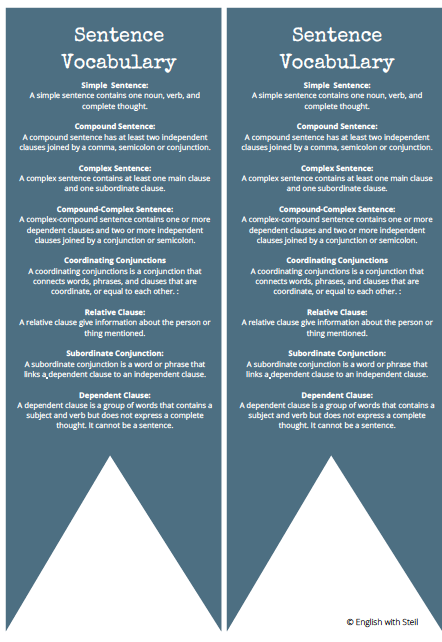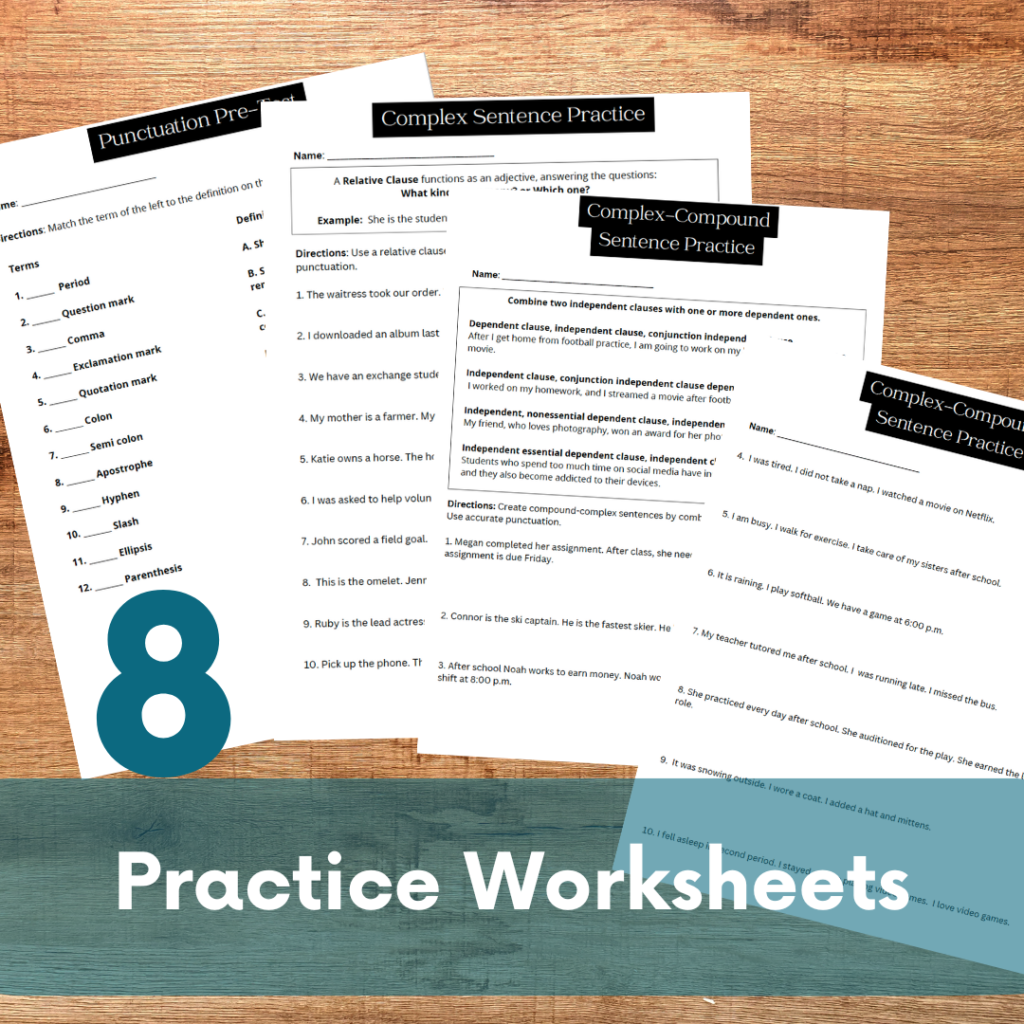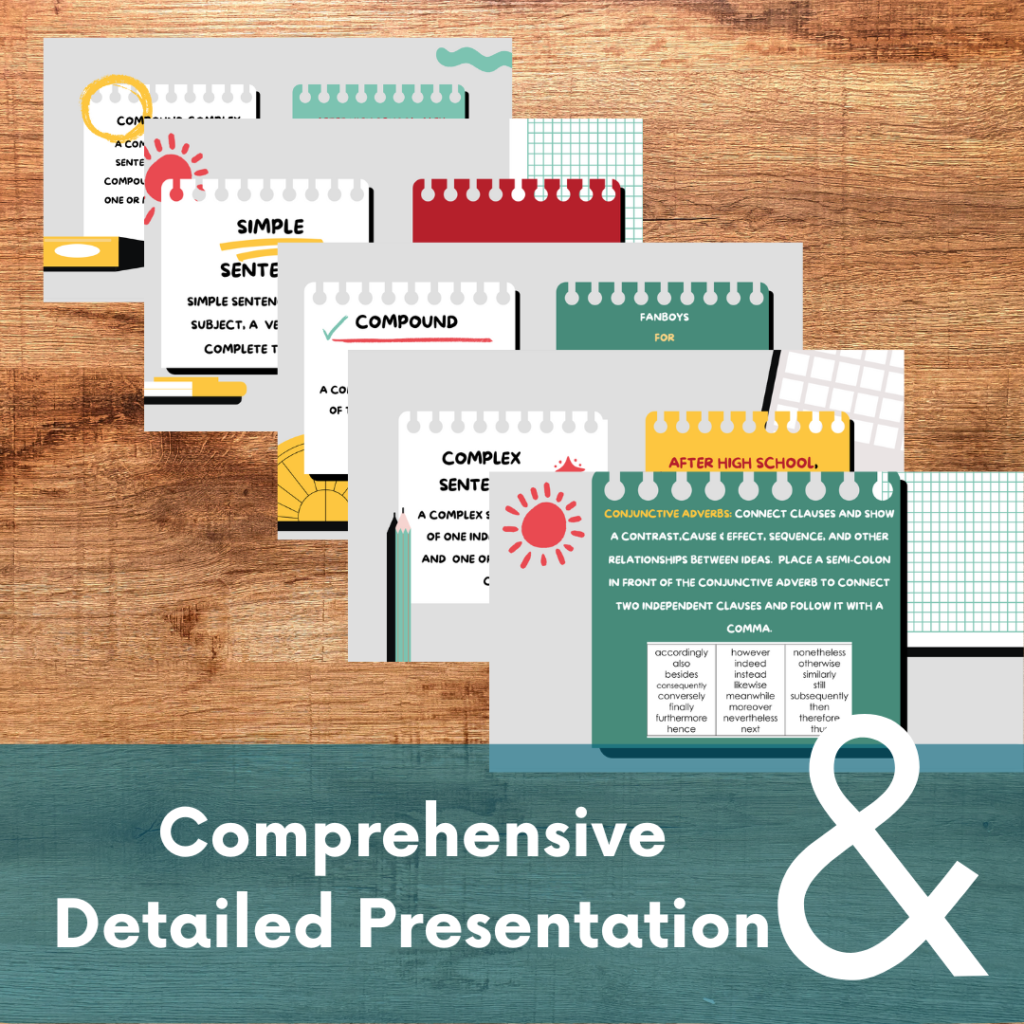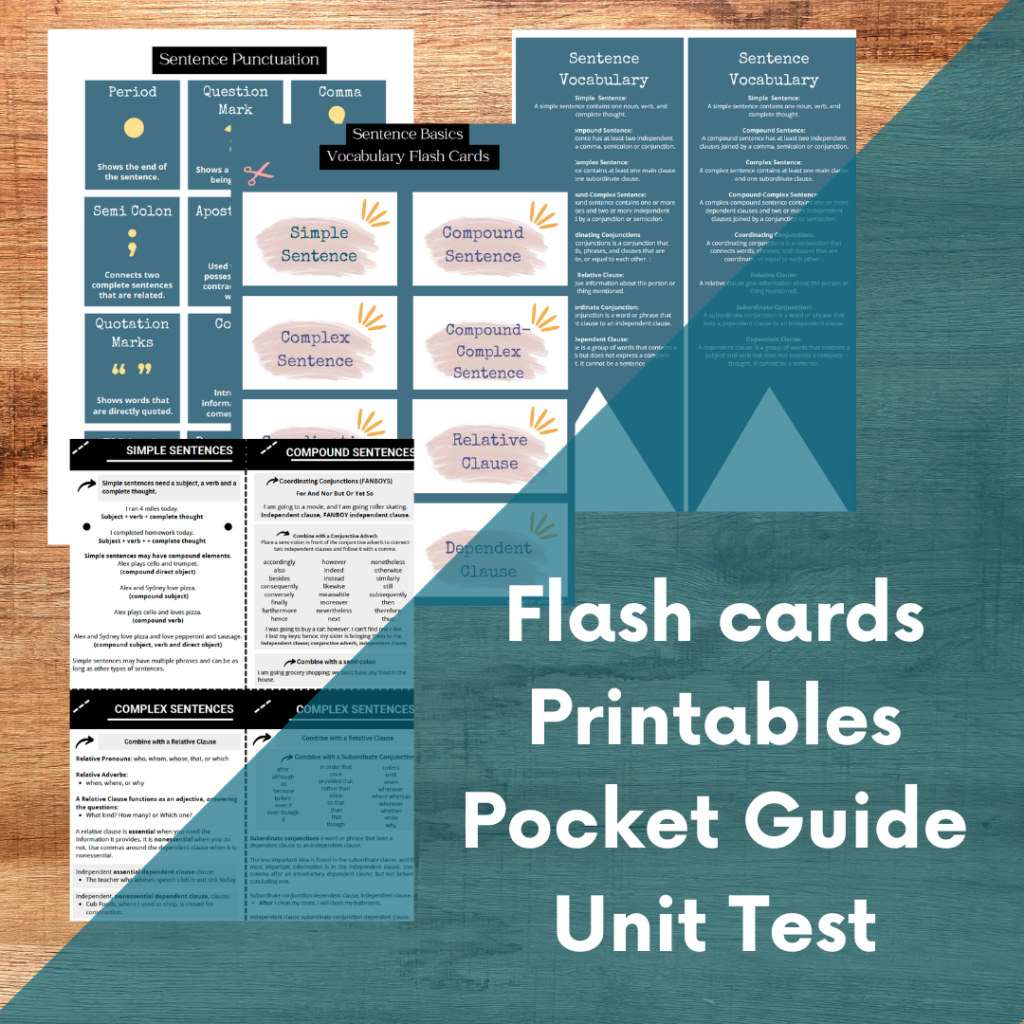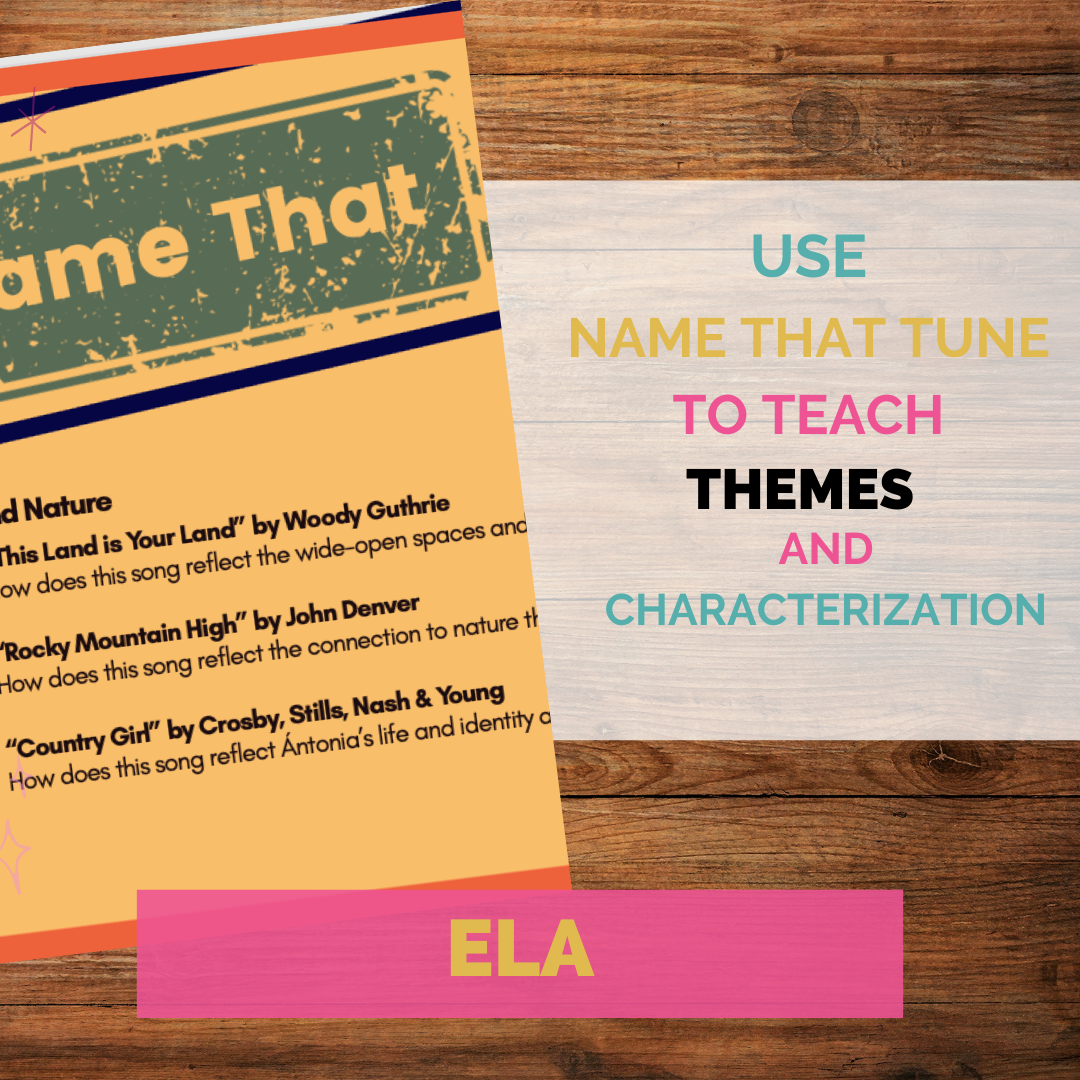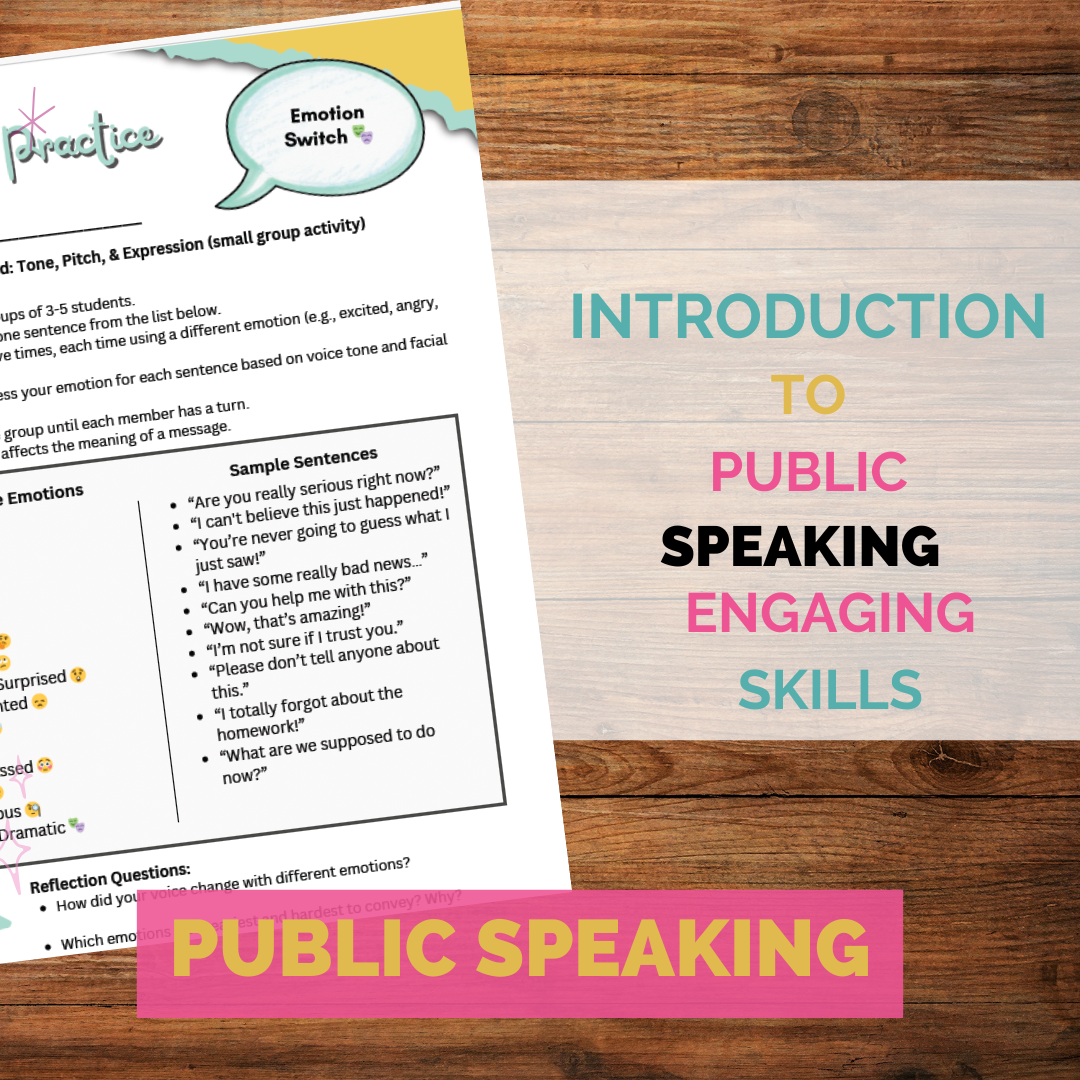Are you ready to help your students master the art of sentence construction? Teaching sentence structure might seem like a daunting task, but with the right strategies and a bit of creativity, it can be both fun and rewarding. For years I dreading teaching this unit because it was more technical than other aspects of Language Arts. But I have found some practical and creative ways to make this accessible for students (and fun at the same time). Sneaky teachers!
Types of Sentences: The Building Blocks
First, let’s break down the basic types of sentences. Understanding these will give your students a strong foundation to build on.
- Simple Sentences: These contain one independent clause (a subject and a verb). Example: “The cat slept.”
- Compound Sentences: These contain two or more independent clauses joined by a conjunction (for, and, nor, but, or, yet, so) or a semicolon. Example: “The cat slept, and the dog barked.”
- Complex Sentences: These contain one independent clause and at least one dependent clause. Example: “The cat slept because it was tired.”
- Compound-Complex Sentences: These contain two or more independent clauses and at least one dependent clause. Example: “The cat slept because it was tired, and the dog barked at the mailman.”
Tips for Teaching Sentence Structure
1. Start with the Basics:
- Nouns and Verbs: Ensure students understand nouns and verbs before moving on to sentence construction. Use simple exercises to identify and categorize nouns and verbs in sentences.
- Subjects and Predicates: Teach students to identify the subject and predicate in a sentence. This helps them understand how sentences are formed.
2. Use Visual Aids:
- Sentence Diagrams: Visual representations can help students grasp the structure of different sentence types. Use sentence diagrams to break down and illustrate the components of sentences.
- Color Coding: Color-code different parts of a sentence (subject, verb, object, etc.) to make it visually clear. This is especially helpful for visual learners.
3. Practice, Practice, Practice:
- Worksheets: Provide plenty of practice worksheets with exercises on identifying and constructing different types of sentences.
- Daily Sentence Writing: Incorporate a daily sentence-writing exercise into your routine. Give students prompts to write simple, compound, complex, and compound-complex sentences.
Fun Ideas for Teaching Sentences in the Classroom
1. Sentence Construction Game:
- Materials: Index cards, markers.
- How to Play: Write different parts of sentences (subjects, verbs, objects, clauses, conjunctions) on separate index cards. Divide the class into small groups and give each group a set of cards. Have them create as many sentences as possible using the cards. Award points for different types of sentences to make it competitive and fun.
2. Sentence Puzzles:
- Materials: Sentence strips, scissors.
- How to Play: Write sentences on strips of paper and cut them into individual words or phrases. Mix them up and have students work in pairs or small groups to reconstruct the sentences. This activity helps students understand sentence order and structure.
3. Interactive Sentence Wall:
- Materials: Bulletin board, sentence components on cards.
- How to Use: Create an interactive sentence wall in your classroom where students can physically move parts of sentences around to create different sentence types. Change the components regularly to keep it fresh and challenging.
4. Sentence Stacking:
- Materials: Blocks or LEGO bricks, markers.
- How to Play: Write words or parts of sentences on blocks. Have students stack the blocks to form different types of sentences. This tactile activity is especially great for younger students.
5. Sentence Starters:
- Materials: Sentence starter prompts.
- How to Use: Provide students with sentence starters that they must complete. This encourages creative thinking and helps them practice constructing different types of sentences. For example, “Although it was raining, …” or “The teacher smiled when …”
6. Digital Sentence Construction:
- Materials: Tablets or computers, sentence construction apps or online tools.
- How to Use: Utilize educational technology to engage students. There are many online tools and apps that offer interactive sentence construction exercises and games.
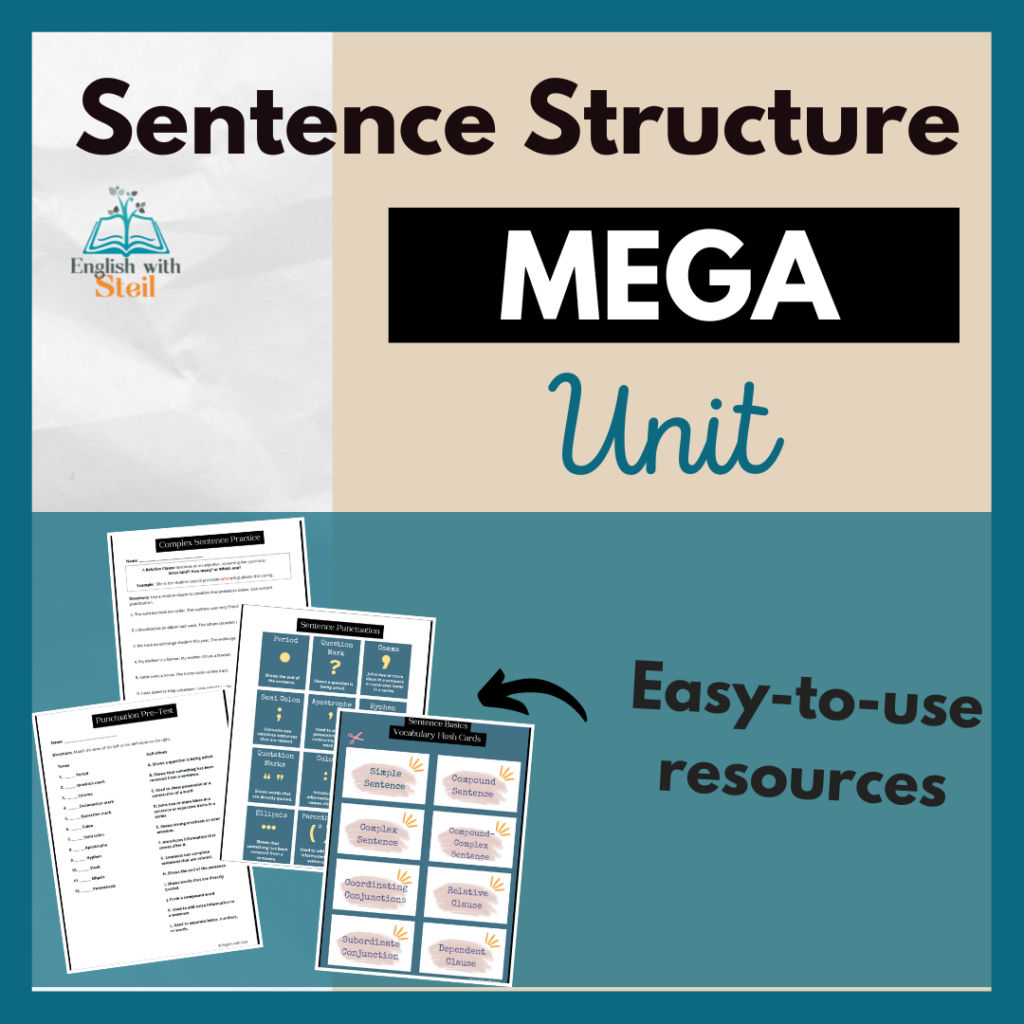
Final Thoughts
Teaching sentence construction doesn’t have to be dry or boring. By incorporating these tips and fun activities into your lessons, you can help your students build a strong foundation in sentence structure while keeping them engaged and excited about learning. Remember, the key is to make it interactive, visual, and hands-on.
So, let’s get those sentences rolling and watch our students become confident, skilled writers!
Happy teaching and happy constructing!
Check out the following resources from my teacher colleagues:
Choosing an Order of Topics in Grammar Instruction by Secondary Sara
How to get Started with Mentor Sentences by BeSpoke Classroom

